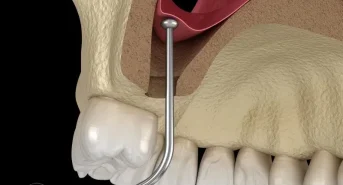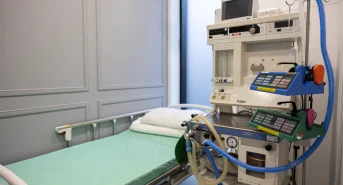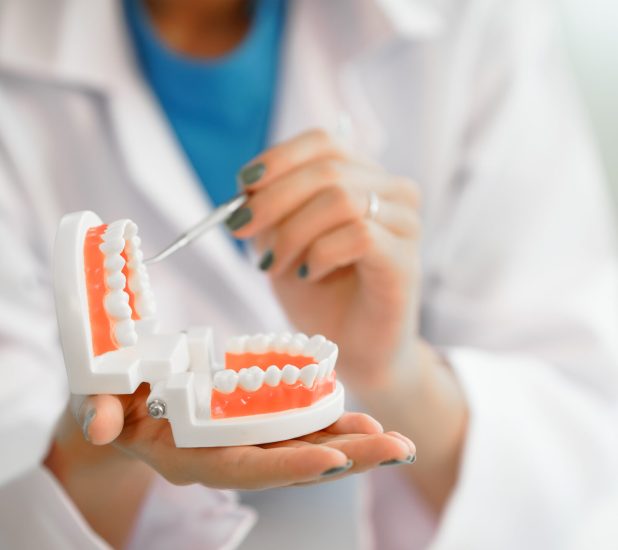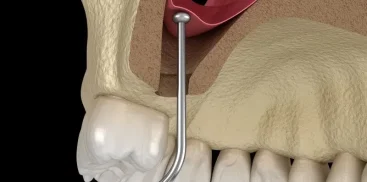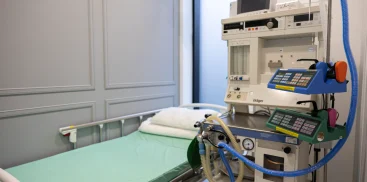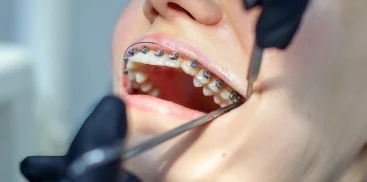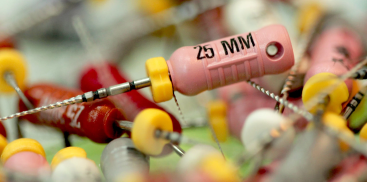What is Invisalign?
Invisalign is a modern method of correcting bite issues and straightening teeth using transparent, nearly invisible dental aligners known as aligners. It serves as an alternative to traditional orthodontic braces made of metal or ceramic. Invisalign is especially popular among adults and older teenagers seeking a less noticeable orthodontic treatment option. However, not every orthodontic case can be treated with this method, making a consultation with a specialist crucial to determine if Invisalign is suitable for a specific patient.
Is Invisalign Effective?
Invisalign is considered an effective method for straightening teeth, utilizing a system of clear plastic aligners tailored to fit the changing bite of the user. These aligners, favored by adults and teenagers alike, allow for the straightening of smiles without the need for traditional metal and wire braces. It’s important to note, however, that Invisalign is most effective when worn 20 to 22 hours per day and may not be suitable for all orthodontic cases, particularly more complex ones. A high level of patient commitment is required since positive outcomes are not guaranteed if the aligners are worn inconsistently.
Fixed Braces or Invisalign? What are the Differences?
The primary differences between traditional braces and the Invisalign system lie in their appearance, treatment method, comfort, and impact on daily life. Here is a detailed comparison:
1. Appearance:
– Traditional Braces: Made of metal brackets attached to each tooth, connected by wires, and may include elastic elements like rubber bands. While more visible, modern braces can be less noticeable than older versions, with options for ceramic or colored braces that are more aesthetically pleasing.
– Invisalign: This system uses a series of clear, plastic aligners that are virtually invisible when worn. The aligners are custom-made to fit the teeth and gradually move them to the desired position.
2. Treatment Method:
– Traditional Braces: Brackets and wires apply continuous pressure on the teeth to slowly move them into the correct position over time. Adjustments are made by the orthodontist during regular visits, typically every 4-6 weeks.
– Invisalign: Treatment consists of a series of aligners worn for about two weeks each before moving on to the next set in the series. Each aligner is slightly different, gradually moving the teeth to their final position.
3. Comfort:
– Traditional Braces: Wires and brackets can sometimes cause irritation inside the mouth, and adjustments may result in some discomfort.
– Invisalign: Aligners are made from smooth plastic and are generally considered more comfortable than traditional braces. However, some discomfort is still possible as teeth move.
4. Impact on Lifestyle:
– Traditional Braces: Dietary restrictions are necessary to avoid damaging the braces. Hard, sticky, and chewy foods are typically prohibited. Oral hygiene can be more challenging, requiring more time and care to clean around brackets and wires.
– Invisalign: Aligners are removable, so there are no dietary restrictions, and maintaining oral hygiene is as easy as removing the aligners to eat, brush, and floss. However, aligners must be worn 20-22 hours a day to be effective, requiring discipline.
5. Treatment Time:
– The duration of treatment can vary significantly depending on the individual case and the complexity of dental issues. Generally, traditional braces are worn for about 18 months to 3 years, while Invisalign treatment can last from 6 to 18 months, though this can vary greatly.
6. Cost:
– The cost of both treatments can vary significantly based on the complexity of the case, geographic location, and specifics of the treatment plan. Generally, Invisalign may be more expensive than traditional braces, but this is not always the case, and insurance may cover some of the costs of either treatment.
7. Suitability:
– Traditional Braces: Can treat a wide range of orthodontic issues, including more complex cases.
– Invisalign: Best suited for mild to moderate dental problems. Not all cases are suitable for Invisalign treatment, especially more complex orthodontic issues.
How Does Invisalign Treatment Work?
Consultation: The process begins with a consultation with a dentist or an orthodontist trained in Invisalign, who assesses your smile and determines if Invisalign is the right treatment for you.
Personalized Treatment Plan: Using 3D computer imaging technology, the dentist creates a precise treatment plan, from the initial position of your teeth to the desired final position.
Invisible Aligners: Based on the treatment plan, a series of personalized aligners are produced specifically for your teeth. Each aligner is worn for about two weeks before moving on to the next in the series, gradually moving the teeth towards the anticipated final position.
Regular Check-ups: You will have occasional check-ups, usually every 6 weeks, to monitor progress and receive new aligners.
How to Care for Aligners at Home?
1. Regular Cleaning: Aligners should be cleaned regularly using a soft toothbrush and water. Avoid using hot water as it can warp the aligners.
2. Proper Storage: When not in use, aligners should be stored in their protective case to avoid damage or loss.
3. Avoid Certain Foods and Drinks: While aligners are removed for eating and drinking, it’s important to avoid certain foods and drinks that can stain or damage the aligners, such as coffee, red wine, and hard or chewy foods.
4. Oral Hygiene: Maintain good oral hygiene by brushing and flossing teeth before reinserting the aligners to prevent trapping food particles or bacteria.
Pros and Cons of Invisalign
Pros:
– Aesthetically pleasing due to its near invisibility
– Removable, allowing for easier eating and oral hygiene
– Generally considered more comfortable than traditional braces
– No dietary restrictions
Cons:
– May be more expensive than traditional braces
– Requires discipline to wear the aligners the recommended 20-22 hours per day
– Not suitable for all orthodontic cases, particularly complex ones
– Can be lost or damaged due to their removable nature
In conclusion, Invisalign offers a discreet and effective option for those looking to straighten their teeth without the appearance of traditional braces. However, its suitability depends on individual cases, and a consultation with a dental professional is essential to determine if Invisalign is the right choice for you.
How long does it take to see Invisalign results?
The time it takes to notice the effects of Invisalign treatment can vary significantly depending on the complexity of your dental issues and how closely you follow the treatment plan. Generally, patients may start noticing some changes within a few weeks to a few months after starting treatment. However, significant results often become more visible after several months of regular wear.
Invisalign aligners are typically changed every 1-2 weeks, and each set is designed to gradually shift teeth. The total duration of Invisalign treatment can range from 6 months to 2 years or more, with the average treatment time being about 12 to 18 months.
It is important to wear the aligners for the recommended 20-22 hours per day and follow the orthodontist’s instructions regarding switching to a new set of aligners to ensure the best and quickest results. Regular check-ups with the orthodontist will also help monitor progress and make any necessary adjustments to the treatment plan.
How long does Invisalign treatment last?
The duration of Invisalign treatment varies depending on the individual dental needs of the patient and the complexity of the case. On average, the duration of Invisalign treatment ranges from 12 to 18 months. However, some simpler cases may be completed in just 6 months, while more complex situations may require more than 2 years. Each set of aligners is typically worn for 1-2 weeks before moving on to the next set in the series, gradually shifting the teeth into the desired position.
It’s worth noting that the actual duration can vary significantly between individuals. Factors such as the amount of tooth movement required, the patient’s age, and how diligently the patient follows the treatment plan (including wearing the aligners for the recommended 20-22 hours a day) can affect the treatment duration.
What bite defects can Invisalign treat?
The bite defects that can be treated with Invisalign include:
– Crossbite
– Open bite
– Deep bite
– Excessive spaces between teeth
– Crowding
Can you eat and drink with Invisalign aligners in?
It is not recommended to eat or drink (besides water) while wearing Invisalign. Here are some important rules to follow during Invisalign treatment:
– Remove Invisalign before eating: Always remove Invisalign aligners before eating to avoid damaging or soiling the aligners.
– Drink only water: You can drink cold or room temperature water while wearing Invisalign. Avoid hot beverages that can warp the plastic aligners.
– Maintain oral hygiene: After each meal, brush your teeth thoroughly before putting the Invisalign aligners back in. If brushing is not possible, rinse your mouth with water to remove food particles.
– Clean Invisalign aligners: Regularly clean your aligners with a soft brush and water, avoiding toothpaste that can be too abrasive.
What are the disadvantages of Invisalign?
Invisalign, despite its popularity and effectiveness in many orthodontic cases, has some disadvantages that patients should consider before choosing this treatment method:
1. Cost: Invisalign can be more expensive than traditional braces in some cases, depending on the complexity of treatment and geographic location.
2. Discipline required for wearing time: Requires strict adherence to wearing time: For Invisalign to be effective, aligners must be worn for 20-22 hours a day. This level of discipline can be difficult for some patients, especially younger ones.
3. Removal before eating or drinking: Aligners must be removed before eating or drinking anything besides water: This can be inconvenient, especially when eating out or when frequent snacking or drinking is necessary throughout the day.
4. Risk of loss or damage: There’s a risk of losing aligners: Since aligners are removable, there’s a risk of them being lost or damaged, which can lead to treatment delays and additional costs.
5. Speech adjustment: Temporary speech adjustment: Some people may experience slight lisping or change in speech when they start wearing aligners, although this usually improves over time.
How much does Invisalign cost in Warsaw?
The cost of Invisalign treatment can vary significantly depending on many factors. The average price range can be from several to several tens of thousands of Polish złotys, or even over 20,000 zł, but the exact amount depends on the individual needs of the patient and the complexity of the case. Here are the main factors that affect the cost of Invisalign:
– Case complexity
– Number of aligners
– Experience and qualifications of the orthodontist
– Duration of treatment
Visit Warsaw Dental Center, where our experienced orthodontists will help you decide on a simple and natural smile, answering all your questions.
Article written on 03.10.2022 and updated on 26.02.2024 based on the latest technology and research.

